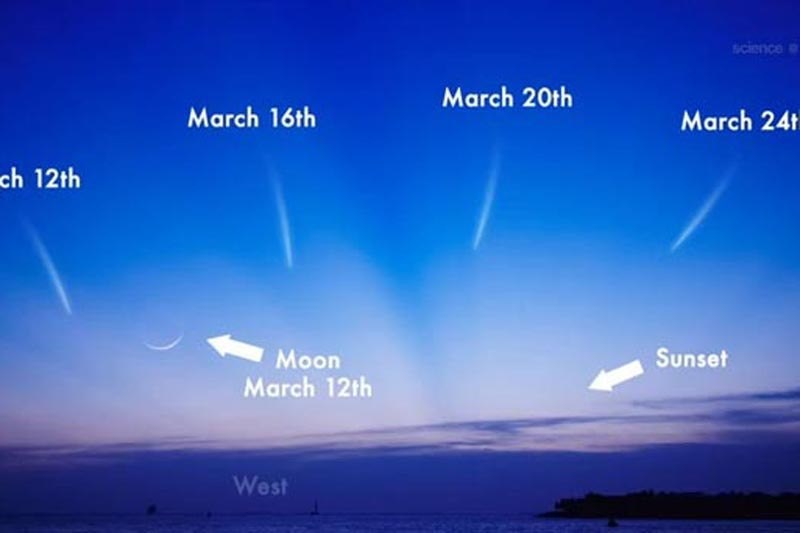Stargazers might be able to catch a glimpse of the comet Pan-STARRS this week as it enters the northern hemisphere.
It might take a pair of binoculars but the comet will look like a fuzzy streak in the sky, said Dave Gallant, member of the Royal Astronomical Society of Canada Thunder Bay Centre.
“It’s going to be low in the western horizon right after sunset. You’ve got to catch it right when the sun goes down. You’ll have to have a really low western horizon as well,” he said.
The best days to spot the comet in Thunder Bay are March 12 and 13 when there is expected to be a thin crescent moon in the sky, Gallant said.
“If you can find the moon in your binoculars, just look around the moon and the comet should be right near the moon,” he said, adding there should also be some good photo opportunities this week.
Pan-STARRS was discovered in June 2011 and reaches its closest point to the sun on March 10. It won’t get too close to the Earth, the closest point being about 160 million kilometres away.
Gallant said comets like this one are fairly common but they don’t usually get as bright as Pan-STARRS will be.
“A lot of times if you have a telescope and know where to look, you’ll be able to find three or four comets on any given night,” he said.
“They’re never this bright that you can see them with binoculars, or if you’re lucky, just the naked eye.”
Pan-STARRS is expected to be at its brightest on March 12 when it will be as bright as the stars in the Big Dipper.
Gallant said a good spot in the city to spot the comet is the James Street Playfield as the area is fairly flat and there’s a low west horizon.
